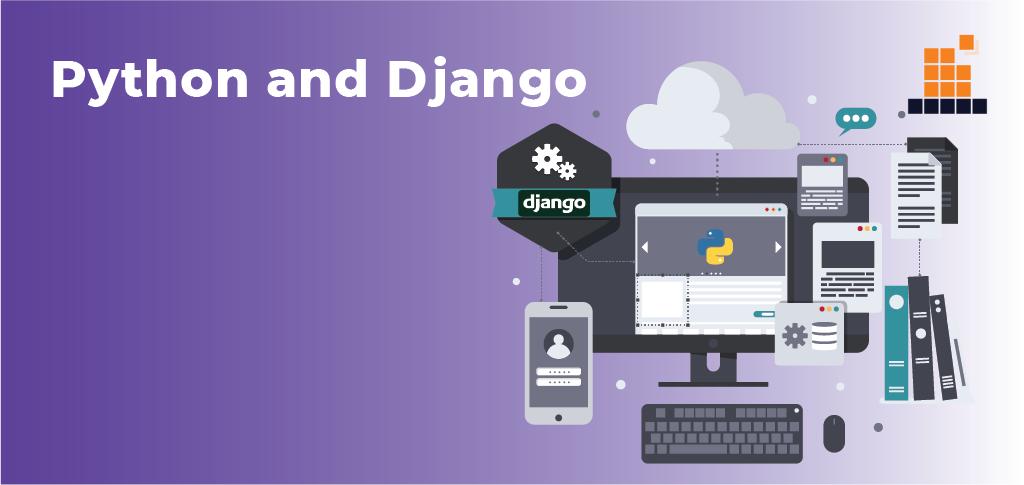Django was developed in an instantaneous news environment. That is why it was designed in such a way that it made common web development tasks easy and fast to perform. The goal of this article is to give you enough knowledge about Django in python so that you can understand it easily. By and large, Django is the main framework for the python developers these days. Also, it is not very hard to see why. It is excellent in hiding a lot of configuration logic and letting the developers focus on building big applications quickly and efficiently. Let us get into it.
Meet Django
Django classifies itself as a high-level python web framework that is based on MVT (Model, view, and template). It encourages rapid development and clean and expedient design. Django is built by experienced developers. Thus, it very carefully takes care of much of the hassle that occurs during web development. This allows you to focus on writing the code for your application without the need of reinventing the wheel. They mean it! Django is a massive web framework that comes with a lot of batteries included which is why often it can be a mystery during development how everything manages to work together. It is extremely popular among developers and is a fully-featured server-side framework.
In addition to it being a large framework, its community is entirely massive. As a matter of fact, it is so big and active that there is a whole website developed by them that is devoted to the third party packages people. They are the people who were behind the designing of Django for making it do a whole list of things. It includes everything such as authentication, authorization, content management systems, e-commerce add ons, and integration with stripes. Moreover, when we talk about reinventing, there are considerable chances that if you want something done with the help of Django, someone might’ve already done it. You just have to pull it into your project.
For this objective, we will have to build a REST API with Django. So, we will use the Django REST framework. It has the responsibility to turn the Django framework into a system specifically made for effectively handling REST interactions. It was made especially to serve fully rendered HTML pages that are built with Django’s templating engine.
What can we use Django for?
Django framework uses a powerful ORM layer. It simplifies dealing with a database and the data. It also accelerates the development process. Without ORM (Object-relational mapping), developers would have to create the tables themselves and define all the queries and procedures which occasionally translates to a sturdy amount of SQL that is prone to hard to track and complex.
ORM is an advantage as it lets the developers write the table definitions in a simple python code. It further takes care of translating them to appropriate query language and facilitating the CRUD operations. Moreover, the developer doesn’t even need to know the complex SQL. However, understanding SQL can always help you write better codes and faster queries making your website even more secure.
Unlike other frameworks, in Django, all the models are placed in one file that is models.py. Django supports several database systems. For this purpose, SQLite is very good for development and testing since it could be used right away without the need to install further software. You can go for MySQL or PostgreSQL for production. You can use MongoDB with Django if you are looking for NoSQL database.
Why is it a good choice?
Since the Django framework’s creation, its stability, community, and performance have increased immensely over the past decade. Its detailed tutorials and good practices are available everywhere in the books and on the web. This framework further continues to add noteworthy new functionalities such as database migration with every release.
Experts highly recommend this framework for new Python web developers as its official documentation and tutorials are the best in software development. There are arguments over whether learning python by using Django is not a good idea. However, that criticism is worthless if you take your time to learn the python syntaxes and language semantics well first before diving right into web development.
Furthermore, Django has a multifaceted nature which means that it can do numerous amounts of tasks. We can use it in:
- CRM Systems
- Document administration platforms
- Emailing solutions
- Verification systems
- Machine learning
- Data analysis solutions
- Filtering systems
- Communicating platforms
- Booking engines
Thousands of websites have Django as their core. In short, it is an excellent choice for web development.
Python Django Advantages
If you will ask any Django dev about the Django framework, you will most probably get a similar reply. We have highlighted Django’s advantages that make it stand out from the rest.
- Django is a battery-included framework. It means that Django comes with a lot of out of the box features and functions that you may or may not use in your application. Instead of writing the whole code, you just need to import several packages which will make it easy for you to develop.
- Django uses python which is why it utilizes some of the fame and power of python itself for its benefit. Python is the easiest programming language to learn and it is quite popular too.
- Its community is helpful and actively works on making this framework even more beginner-friendly. They frequently stabilize the framework by adding new features.
- Picking up a scalable framework is very important for developers as it allows them to take a lot of actions regarding scalability such as running separate servers for the application and the database or use clustering and load-balancing for distributing the application across several servers. Django fulfills this requirement.
- It offers an administrative interface that is both versatile and professional.
